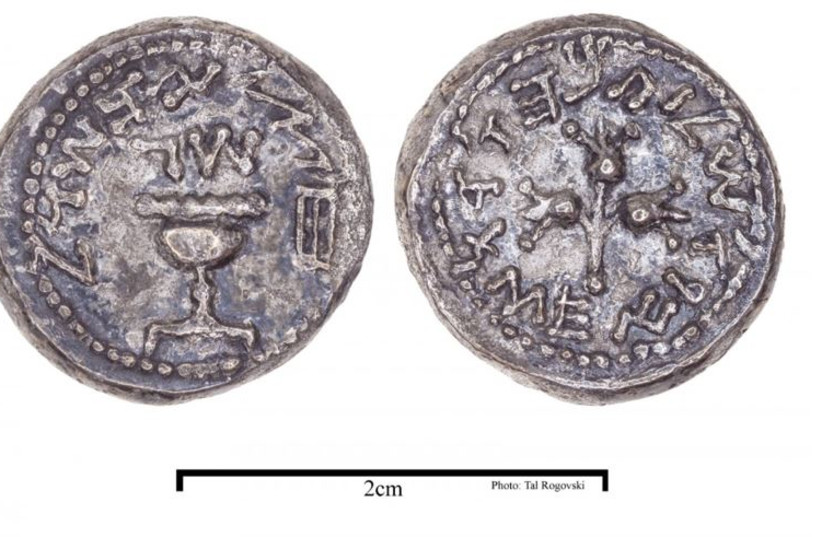Nadene Goldfoot
Archaeology occupies an important place in Israel because it has helped to uncover a great deal about the Jewish past in the Land over the last 3,000 years. But interest in the Land of Israel is not limited to the Jewish history. Here was the cradle of Christianity, here the early churches were built, this was a region of important activity for Islam in its first stages. Therefore, pilgrims of all religions have for many centuries come to visit the places holy to their faiths.
The fishhook, possibly for hunting sharks, was discovered in the Israel Antiquity Authority excavations carried out prior to the construction of the Agamim neighborhood in Ashkelon * The special find will be exhibited at the 48th Archaeological Congress, organized by the Israel Antiquity Authority, the Israel Exploration Society, and the Israeli Archaeological Association.
In the Jordan Valley, Galilee and the Carmel Range, bones of Early Man were found together with his tools and remains of the animals that he hunted. the oldest of these remains date back over a million years.
Ruins of a city gate and pagan stele at the Et-Tel archaeological site at Bethsaida. Photo by Chmee2/Wikimedia Commons.Vestiges of Canaanite settlements from the 3rd and 2nd millennia BCE were brought to light in such biblical sites as Hazor, Megiddo, Ashdod, Jerusalem and Shechem. Recent finds in Hazor, Megiddo, Geezer, Jerusalem Beersheba, Ashdod and Dan have illuminated the settlement of the Israelites on their return from Egypt towards the end of the 2nd millennium BCE and particularly after the establishment of the kingdoms of Israel and Judah, providing many details about the daily life, architecture, arts and forms of religious worship.
Aren Maeir (born 1958) is an American-born Israeli archaeologist and professor at Bar Ilan University. He is director of the Tell es-Safi/Gath Archaeological Project A list was compiled with the help of Bar-Ilan University archeologist Prof. Aren Maeir. He has directed excavations and surveys in Jerusalem (the Western Wall Tunnels, Mamilla, Kikar Safra, Malha), the Beit She’an Valley and Tel Yavneh. He’s widely known for his ongoing work at Tel es-Safi, the site that opens our list. Maeir notes that these sites are open to the public. Many have well-marked paths with excellent signage explaining what you’re seeing. He has participated in, and directed, numerous archaeological excavations in Israel, including at the following sites: Jerusalem, Hazor, Yoqneam, Tell Qasile, Beth-Shean, and since 1996, at Tell es-Safi/Gath. He is married to Adina (née Hartman), and they have three sons and four grandchildren.
A list was compiled with the help of Bar-Ilan University archeologist Prof. Aren Maeir. He has directed excavations and surveys in Jerusalem (the Western Wall Tunnels, Mamilla, Kikar Safra, Malha), the Beit She’an Valley and Tel Yavneh. He’s widely known for his ongoing work at Tel es-Safi, the site that opens our list. Maeir notes that these sites are open to the public. Many have well-marked paths with excellent signage explaining what you’re seeing. He has participated in, and directed, numerous archaeological excavations in Israel, including at the following sites: Jerusalem, Hazor, Yoqneam, Tell Qasile, Beth-Shean, and since 1996, at Tell es-Safi/Gath. He is married to Adina (née Hartman), and they have three sons and four grandchildren. Ark of the Covenant in the center between Menoras 
Mosaic decoration at the Hammath Tiberias synagogue--In Hammath Tiberias, the personified sun god appears at the center of a large mosaic floor divided into three panels featuring dedicatory inscriptions, personifications of the seasons and the twelve signs of the zodiac, and motifs associated with the ancient Jewish Temple in Jerusalem. What prompted the fourth-century Jewish community of Hammath Tiberias, a monotheistic community, to adorn their house of worship with an image of Sol, a prominent Roman deity? The mosaics of Hammath Tiberias can only be understood in the context of Late Antique and early Byzantine Jewish history and culture, Greco-Roman and early Christian artistic traditions, and the dramatic political, religious, and social circumstances of the 4th through 7th centuries.
Yigael Sukenik (later Yadin) was born in Ottoman Palestine to archaeologist Eleazar Sukenik and his wife Hasya Sukenik-Feinsold, a teacher and women's rights activist. Yigael Yadin (Hebrew: יִגָּאֵל יָדִין (20 March 1917 – 28 June 1984) was an Israeli archeologist, soldier and politician. He was the second Chief of Staff of the Israel Defense Forces and Deputy Prime Minister from 1977 to 1981.
During the early 1960s, Israeli archaeologists working on Masada, an ancient fortress which towers over the Dead Sea, unearthed what had been Herod the Great's winter retreat (73-4BC). Items revealed included wall paintings, scrolls and a sophisticated water collection system. The dig was led by Professor Yigael Yadin, the former Israeli military chief of staff, between 1963 and 1965, and was helped by a large team of international volunteers. Many of these had responded to an appeal that had appeared in the Observer on 11 August 1963.
Silver coins found near Temple Mount prove Jewish history of Israel
“This is the third coin of this type found in excavations in Jerusalem, and one of the few ever found in archeological excavations,” said the researchers.













No comments:
Post a Comment